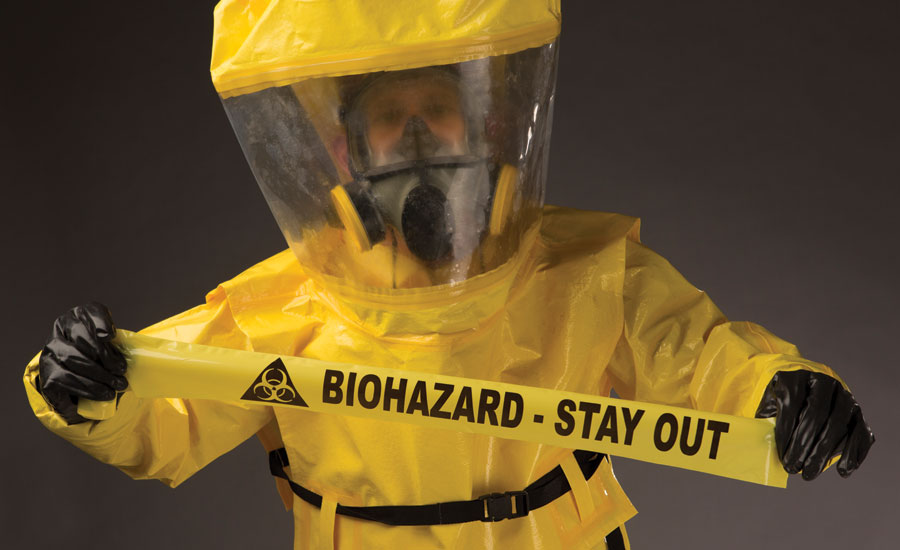Expert Biohazard Cleaning and Purification for Blood, Bodily Fluids, and Hazardous Materials
The potential wellness risks linked with exposure to biohazards highlight the crucial demand for precise handling and detailed clean-up. As we navigate the intricate landscape of biohazard cleaning, understanding the subtleties of regulations, conformity, and the customized devices at play comes to be vital in making certain a risk-free and detailed decontamination process.
Wellness Risks of Biohazard Exposure
Direct exposure to biohazards postures significant health and wellness threats that can result in serious effects for people and communities alike. Biohazards incorporate a large variety of organic compounds, consisting of blood, physical liquids, mold, germs, infections, and other possibly infectious products. When people come into contact with these biohazards, whether with crashes, incorrect handling, or ecological direct exposure, they face the threat of having major diseases or illness.
One of the main health and wellness threats related to biohazard direct exposure is the transmission of infectious diseases. Bloodborne virus such as HIV, liver disease B and C, and numerous microorganisms can be existing in biohazardous products, posturing a straight danger to human wellness. Breathing in air-borne biohazards like mold spores or coming into contact with contaminated surfaces can additionally bring about respiratory system concerns, allergic reactions, and various other negative health and wellness impacts.
Additionally, biohazard exposure can have long-term health effects, with some conditions materializing years after the preliminary contact (Blood Cleanup). For that reason, it is vital to prioritize appropriate biohazard cleaning and purification to alleviate these health and wellness dangers and make certain the safety and security of neighborhoods and individuals

Specialized Educating for Biohazard Clean-up
When it pertains to managing biohazard clean-up successfully and securely, specialized training plays a fundamental role in making sure proper purification treatments are adhered to. Biohazard clean-up needs particular understanding and abilities to properly mitigate dangers associated with bloodborne microorganisms, physical liquids, and harmful products. Professionals trained in biohazard cleanup go through rigorous guideline on how to safely take care of, remove, and deal with biohazardous products to avoid contamination and exposure.
Specialized training for biohazard cleanup covers a variety of crucial topics, including proper personal protective devices (PPE) usage, bloodborne microorganism understanding, purification strategies, and contaminated materials disposal protocols. Individuals trained in biohazard cleanup are geared up with the needed expertise to evaluate contamination levels, determine prospective threats, and apply ideal cleaning treatments in conformity with governing criteria.
Continual training and education and learning are extremely important in the area of biohazard clean-up to remain updated on the newest decontamination technologies, safety protocols, and regulations. By spending in specialized training, biohazard cleaning specialists can successfully reply to emergency situation clean-up circumstances and protect both public health and the environment.
Importance of Correct Purification Methods
Making use of proper decontamination strategies is critical in biohazard cleaning to successfully get rid of hazardous products and lessen health and wellness dangers. Effective purification not only makes certain the elimination of visible traces of blood, physical fluids, and various other biohazards however also targets unseen microorganisms that may posture major health dangers if not effectively eliminated. By adhering to rigid decontamination procedures, trained experts can significantly lower the risk of direct exposure to dangerous microbes, viruses, and germs that can result in infections or diseases.
Correct decontamination techniques entail using customized equipment and disinfectants that are especially developed to reduce the effects of biohazards effectively. Complete cleaning and disinfection of infected locations are necessary to protect against the spread of pathogens and guarantee a secure setting for occupants. Furthermore, the proper disposal of biohazardous waste complying with purification treatments is vital in stopping contamination of various other surface areas or people.

Equipment and Tools for Safe Clean-up
When dealing with blood, bodily fluids, or hazardous products, biohazard cleaning specialists count on specialized equipment to lessen exposure dangers and thoroughly sanitize the affected location. Furthermore, biohazard cleansing packages consisting of anti-bacterials, absorptive products, and biohazard bags are utilized to securely include and get rid of of infected items.
Advanced cleansing devices like hospital-grade anti-bacterials, HEPA-filtered vacuums, and misting machines are utilized to disinfect surfaces and eliminate biohazards effectively. Specialized devices such as sharps containers and biohazard garbage disposal bins are used to securely take care of sharp items and biohazardous waste blood cleanup near me products. By using the appropriate equipment and tools, biohazard cleansing specialists can guarantee a thorough clean-up procedure that focuses on safety and security and minimizes wellness risks for both workers and passengers of the damaged room.
Regulations and Compliance in Biohazard Cleaning
Appropriate adherence to guidelines and conformity criteria is paramount in biohazard cleaning to guarantee the safety and security of both personnel and the atmosphere. Government companies such as OSHA (Occupational Security and Health And Wellness Management) and the EPA (Environmental Defense Firm) have actually developed details standards for biohazard cleaning treatments to decrease health and wellness threats and ecological contamination. These laws cover a series of facets consisting of the handling, transport, and disposal of biohazardous materials, in addition to the required training and protective equipment required for employees associated with the clean-up process.
Biohazard cleaning companies must remain current with these guidelines to ensure that their operations meet the required safety and security criteria. Failure to follow these regulations can lead to severe effects, including fines, lawful activity, and threatening the health of individuals and the setting. By complying this content with strict regulations and conformity steps, biohazard cleaning firms can successfully reduce risks and make certain a thorough and secure cleaning process for all events included.
Conclusion
In verdict, biohazard cleansing and decontamination call for specific training, correct methods, and adherence to regulations. Direct exposure to blood, bodily liquids, and hazardous products poses considerable health dangers, making it crucial to utilize the right devices and devices for safe cleaning. By following stringent protocols and guidelines, specialists can efficiently minimize the dangers connected with biohazard click reference exposure and make sure the safety of both themselves and others.
As we navigate the intricate landscape of biohazard clean-up, recognizing the subtleties of laws, conformity, and the specialized devices at play becomes imperative in guaranteeing a secure and complete purification procedure. (Blood Cleanup)
When it comes to handling biohazard cleaning successfully and securely, specialized training plays an essential duty in guaranteeing proper decontamination treatments are followed.Using appropriate purification strategies is important in biohazard cleanup to successfully remove harmful products and lessen health risks. Furthermore, biohazard cleaning kits including disinfectants, absorbent materials, and biohazard bags are used to securely contain and get rid of of polluted products.
Government companies such as OSHA (Occupational Safety and Health Administration) and the EPA (Environmental Defense Firm) have actually established particular guidelines for biohazard cleaning procedures to lessen health and wellness dangers and ecological contamination.
 Shaun Weiss Then & Now!
Shaun Weiss Then & Now! Josh Saviano Then & Now!
Josh Saviano Then & Now! Mackenzie Rosman Then & Now!
Mackenzie Rosman Then & Now! Samantha Fox Then & Now!
Samantha Fox Then & Now! Tina Louise Then & Now!
Tina Louise Then & Now!